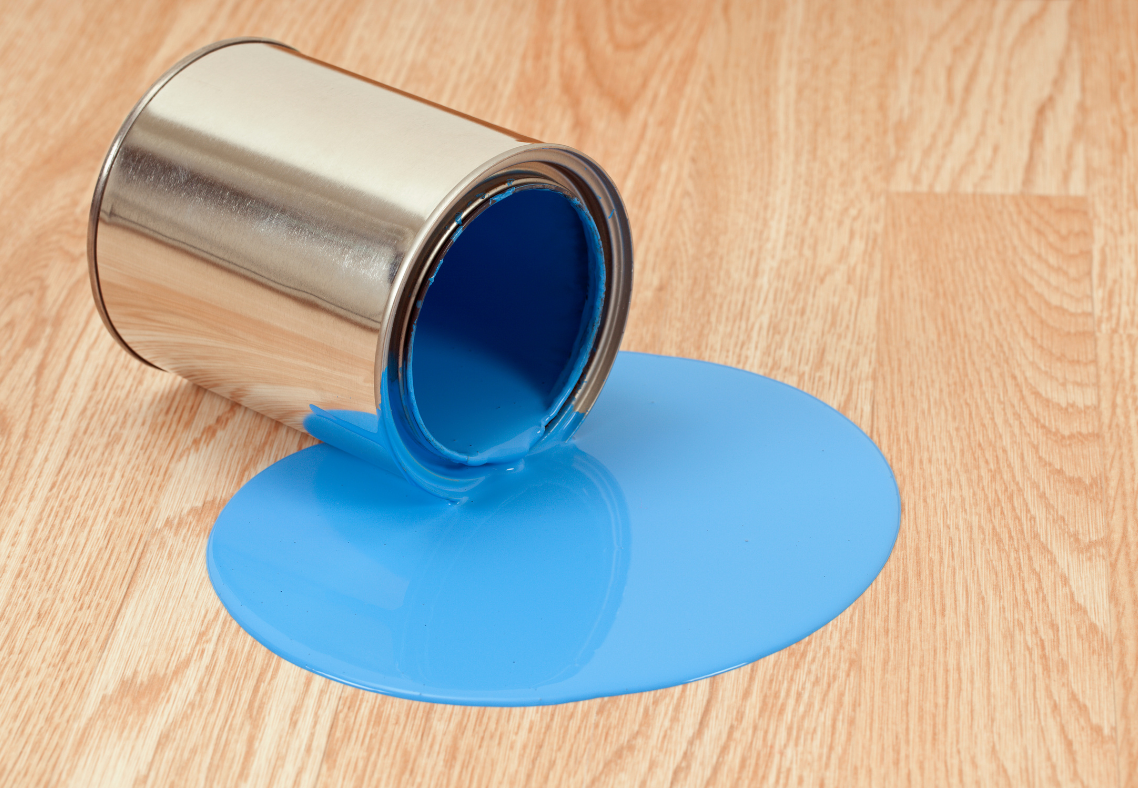How To Remove Paint From Vinyl Flooring
Vinyl flooring is a popular choice for many homeowners in Baltimore County, MD, due to its durability, affordability, and ease of maintenance. However, even the most resilient floors can fall victim to accidental spills and splashes of paint, which can be particularly frustrating to deal with. Whether you’ve recently tackled a home improvement project or your little ones have had a creative moment, knowing how to properly remove paint from vinyl flooring is essential to keeping your floors looking pristine. In this guide, we’ll walk you through effective methods to tackle paint stains on your vinyl floors, ensuring you can restore them to their original condition with minimal hassle.
Answering The Question: How To Remove Paint From Vinyl Flooring
Understanding Vinyl Flooring
Vinyl flooring, which includes options like luxury vinyl tiles (LVT) and sheet vinyl, is made from synthetic materials designed to mimic the appearance of natural flooring materials like wood or stone. Its surface is generally non-porous, making it resistant to moisture and easy to clean. However, this non-porous nature can sometimes work against you when it comes to removing paint, as paint can adhere firmly to the vinyl if not treated promptly.
Identifying the Type of Paint
Before starting the removal process, it’s helpful to identify the type of paint you’re dealing with. Paints can generally be classified into two categories: water-based (latex) and oil-based. Water-based paints are easier to remove compared to oil-based paints, which require more intensive methods. This understanding will guide you in choosing the most effective cleaning method.
Steps to Remove Paint from Vinyl Flooring
1. Act Quickly
The sooner you address a paint spill, the easier it will be to remove. If the paint is still wet, gently blot the area with a clean cloth or paper towel to absorb as much paint as possible. Avoid rubbing, as this can spread the paint and make the stain worse.
2. Use Warm Soapy Water
For fresh or water-based paint spills, start with a simple solution: warm soapy water. Mix a few drops of dish soap with warm water and apply it to the paint stain using a soft cloth or sponge. Gently rub the area in a circular motion to lift the paint from the surface. Rinse the area with clean water and dry it with a towel. This method is often effective for smaller spills and stains.
3. Try Rubbing Alcohol
If soapy water doesn’t fully remove the paint, rubbing alcohol can be an effective next step. Soak a cloth or cotton ball with rubbing alcohol and gently dab it onto the paint stain. The alcohol will help to dissolve the paint, making it easier to wipe away. Be sure to test the rubbing alcohol in an inconspicuous area first to ensure it doesn’t damage the vinyl surface.
4. Use a Commercial Paint Remover
For more stubborn stains, especially those from oil-based paints, you may need to use a commercial paint remover. Look for a product specifically designed for use on vinyl floors. Apply the remover according to the manufacturer’s instructions, usually by applying it to the stain and letting it sit for a short period before wiping it away. Always follow the safety precautions listed on the product label and test the remover in a small, hidden area first.
5. Scrape Off the Paint
If the paint has dried and hardened, you may need to gently scrape it off. Use a plastic putty knife or a similar tool to avoid scratching the vinyl. Carefully work around the edges of the paint stain, lifting it off the surface. Once most of the paint is removed, clean the area with soapy water or rubbing alcohol to remove any residue.
6. Address Residual Stains
Sometimes, paint stains leave a faint residue even after following the above steps. To address residual stains, you can use a mixture of baking soda and water to create a paste. Apply the paste to the stain and let it sit for a few minutes. Gently scrub the area with a soft brush or cloth, then rinse and dry. This method can help to lift any remaining discoloration.
Preventing Future Paint Stains
While dealing with paint stains can be a hassle, there are steps you can take to prevent future spills and damage. Consider the following tips:
- Protective Coverings: When painting, use drop cloths or plastic sheeting to cover your vinyl floors. This will help to catch any accidental drips or spills and keep your floors clean.
- Regular Cleaning: Maintain a regular cleaning routine to remove any dirt or debris that could contribute to paint adhesion. Sweep or vacuum your floors regularly and clean them with a damp mop as needed.
- Immediate Attention: Address any spills or stains immediately to prevent them from setting and becoming more difficult to remove.
Contact Flawless Floors Today For Vinyl Floor Installations In Baltimore County, MD
If you’re considering new vinyl flooring or need professional assistance with floor repairs and maintenance, Flawless Floors is here to help. Our team in Perry Hall, MD, specializes in high-quality vinyl floor installations and can guide you in choosing the best options for your home. We also offer expert advice and services for maintaining your floors, ensuring they look great for years to come. Don’t let paint stains or other issues detract from the beauty of your home. Contact Flawless Floors today for top-notch vinyl floor installations in Baltimore County, MD. Your satisfaction is our priority, and we’re here to help with all your flooring needs.

Sanding & Refinishing

Installation

